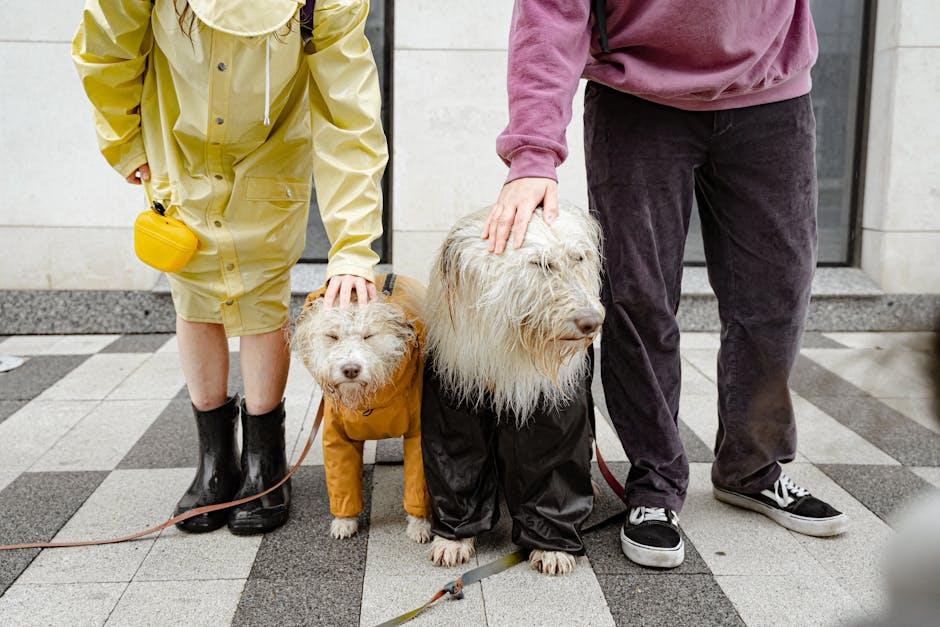Welcoming a furry friend into your life is a journey filled with joy, companionship, and a touch of challenge. Training your dog is an essential part of nurturing a harmonious relationship, and doing so with positive reinforcement can transform this task into a rewarding experience for both you and your canine companion. In this article, we will explore the compassionate and effective method of positive reinforcement training, which focuses on encouraging desirable behaviors through rewards and praise. By embracing this approach, you will not only teach your dog new skills and commands but also strengthen the bond between you, fostering a sense of trust and mutual respect. Whether you are a first-time dog owner or looking to refine your training techniques, this guide will provide you with the insights and tools needed to guide your dog with kindness and patience. Let’s embark on this journey to create a joyful learning environment for your beloved pet.
Understanding the Basics of Positive Reinforcement
At its core, positive reinforcement is a method of encouraging desirable behavior by offering a reward immediately after the desired action is performed. This reward system helps your dog associate good behavior with positive outcomes, making them more likely to repeat that behavior in the future. It’s a simple yet powerful technique that relies on the principle of motivation rather than fear or punishment. To effectively use this method, you need to be consistent and timely with your rewards. Here are some key points to consider:
- Choose the Right Reward: Determine what your dog finds most motivating, whether it’s treats, toys, or verbal praise.
- Timing is Everything: Offer the reward immediately after the desired behavior to strengthen the association.
- Be Consistent: Ensure that everyone involved in training uses the same commands and rewards to avoid confusion.
- Gradually Increase Difficulty: Start with simple tasks and gradually move to more complex commands as your dog becomes more confident.
By focusing on what your dog does right and reinforcing those actions, you build a trusting relationship and encourage a well-behaved companion. This approach not only makes training sessions enjoyable but also strengthens the bond between you and your furry friend.

Creating a Reward System Tailored to Your Dog
Designing a reward system that resonates with your furry friend is crucial for effective training. Every dog is unique, and what motivates one might not work for another. Start by observing what your dog responds to most eagerly. Is it a tasty treat, a favorite toy, or perhaps a heartfelt belly rub? Identifying the right motivators is the first step in crafting a reward system that truly works.
Once you’ve pinpointed what your dog loves, consider these elements to tailor your system:
- Variety: Keep rewards interesting by mixing up treats, toys, and praise. This helps maintain your dog’s enthusiasm and prevents boredom.
- Timing: Deliver rewards immediately after the desired behavior to reinforce the connection between action and reward.
- Consistency: Be consistent with your rewards to establish clear expectations. This helps your dog understand which behaviors are encouraged.
- Scalability: Start with frequent rewards and gradually reduce them as your dog becomes more proficient, maintaining motivation without over-reliance.
Remember, the key to a successful reward system is to make it as unique and adaptable as your beloved canine companion.
Timing and Consistency: Keys to Effective Training
In the journey of training your furry friend, the rhythm of your sessions can be just as important as the methods you use. Establishing a consistent schedule is crucial for your dog to understand and retain new behaviors. Dogs thrive on routine, and by dedicating specific times each day for training, you create a sense of anticipation and readiness in your pet. Aim for short, focused sessions — around 5 to 10 minutes — multiple times a day. This prevents boredom and keeps your dog engaged and excited about learning.
- Consistency: Always use the same commands and rewards to reinforce the desired behavior.
- Timing: Deliver praise and rewards immediately after the desired action to reinforce the connection.
- Patience: Understand that learning takes time and repetition; stay patient and encouraging.
Remember, the goal is to build a trusting relationship with your dog through positive reinforcement. By maintaining a regular training schedule, you help your dog learn and grow in a structured environment, making each session an opportunity for success and bonding.
Building a Strong Bond Through Encouragement and Patience
Training your dog is not just about teaching commands; it’s about nurturing a deep, trusting relationship. To cultivate this connection, encouragement and patience are key elements. When you approach training with a positive mindset, you communicate to your dog that learning is fun and rewarding. Each time your dog successfully follows a command, shower them with praise, treats, or affection. This not only reinforces the desired behavior but also strengthens the emotional bond between you and your furry friend.
- Use treats wisely: Choose small, tasty treats that your dog loves, and reserve them specifically for training sessions.
- Be consistent: Use the same commands and signals to avoid confusion, and practice regularly to reinforce learning.
- Stay patient: Remember, every dog learns at their own pace. Celebrate small victories and be patient with setbacks.
- Create a positive environment: Ensure that training sessions are short and fun, keeping your dog engaged and eager to learn.
By focusing on these practices, you will not only teach your dog effectively but also build a bond that is grounded in mutual respect and understanding.

